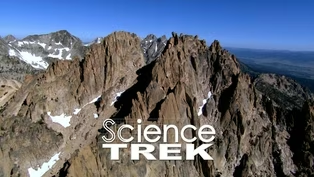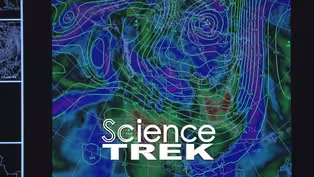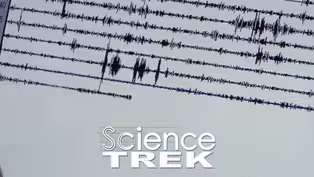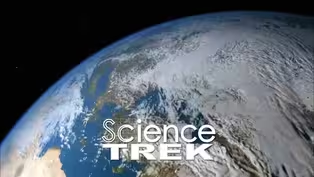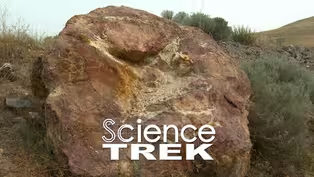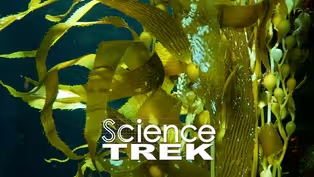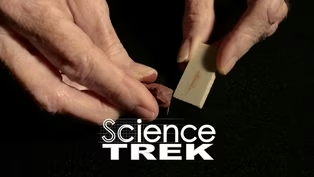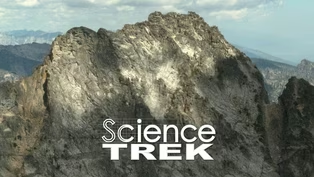
Rocks and Minerals: Hidden Gems
Special | 6m 50sVideo has Closed Captions
How do scientists decide what is a gemstone?
There are about 6,000 different types of minerals, but only a couple hundred are gemstones. Learn more about these special minerals and how someone like you can find your own gemstone.
Problems playing video? | Closed Captioning Feedback
Problems playing video? | Closed Captioning Feedback
Science Trek is a local public television program presented by IdahoPTV
Major Funding by the Laura Moore Cunningham Foundation and Idaho National Laboratory. Additional Funding by the Friends of Idaho Public Television and the Corporation for Public Broadcasting.

Rocks and Minerals: Hidden Gems
Special | 6m 50sVideo has Closed Captions
There are about 6,000 different types of minerals, but only a couple hundred are gemstones. Learn more about these special minerals and how someone like you can find your own gemstone.
Problems playing video? | Closed Captioning Feedback
How to Watch Science Trek
Science Trek is available to stream on pbs.org and the free PBS App, available on iPhone, Apple TV, Android TV, Android smartphones, Amazon Fire TV, Amazon Fire Tablet, Roku, Samsung Smart TV, and Vizio.
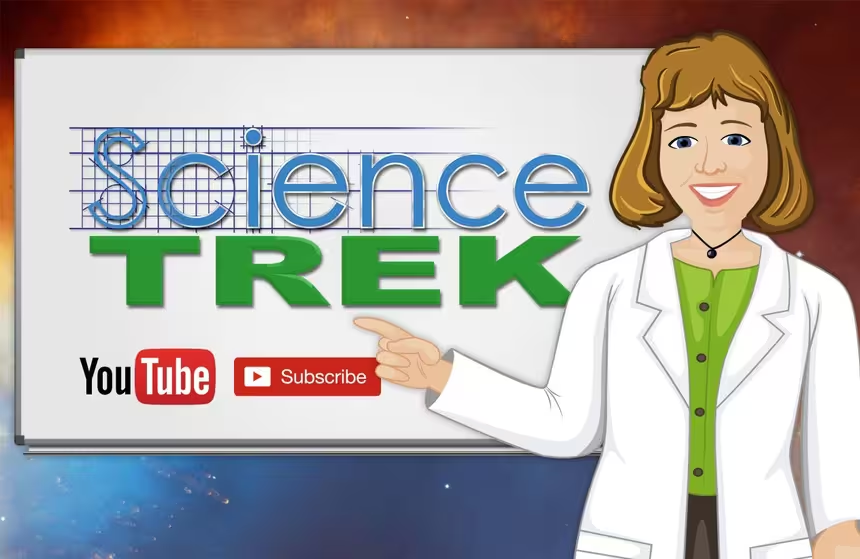
Science Trek
Science Trek is a place where parents, kids, and educators can watch short, educational videos on a variety of science topics. Every Monday Science Trek releases a new video that introduces children to math, science, technology, engineering, and math (STEM) career potentials in a fun, informative way.More from This Collection
Scientists study the earth and its atmosphere in many different ways. Some look at the physical characteristics, like rocks. Others study water or air. Earth Science helps us better understand the world around us and can help keep us safe. Find out more about the Earth.
Rocks and Minerals: Rocks Your World
Video has Closed Captions
Discover how rocks, minerals & the rock cycle change your world. (4m 46s)
Weather: Meteorologists At Work
Video has Closed Captions
How do meteorologists forecast the weather? (5m 13s)
Earthquakes: A Whole Lot of Shaking Going On
Video has Closed Captions
An earthquake is a complicated process but knowing about it can save your life. (5m 11s)
Earthquakes: Seismographs, Pizza, and Football
Video has Closed Captions
Seismographs detect earthquakes, even human-caused quakes. (4m 41s)
Oceans: What's Under the Surface?
Video has Closed Captions
Oceans cover 70% of the Earth’s surface. Find out more about what’s under the surface. (7m 4s)
Oceans: Saving Kelp with AI and ROV
Video has Closed Captions
How do you use AI, ROV and an x-box joystick to save kelp? (6m 50s)
Video has Closed Captions
Find out how glaciers are created and their impact on our lives. (6m 15s)
Providing Support for PBS.org
Learn Moreabout PBS online sponsorshipJOAN CARTAN-HANSEN, HOST: There are about six thousand different types of minerals on Earth, but only a couple hundred can claim the title: gemstone.
[MUSIC] CHILD: Hey Daddy, PARENT: Yes dear?
CHILD: Come here.
I find the one that I like.
PARENT: Did you find that?
Pretty cool!
CARTAN-HANSEN: The Madsen family is out rockhounding.
Rockhounders are people who go out into nature to look for certain types of rocks.
Rocks that sometimes turn out be gemstones.
ROCKHOUNDER 1: Sometimes it's hard to differentiate between what's a good rock and what's a bad rock.
This is a piece of agate versus this is a piece of rhyolite and uncertainty can be resolved by giving it a light chip with a hammer and chip a little flake off.
It reveals a better pattern that can be seen to ensure that it's a rock worth taking home and trying to do something with.
"Look at this one!"
CARTAN-HANSEN: The Wallace family are looking for garnets at the emerald creek garnet area.
U-S Forest Service manages the area and helps visitor look for these semi-precious stones.
The process starts will filling large buckets with dirt the Forest Service has hauled to the site.
Visitors sift through the soil with gravel screens to separate the dirt and smaller stones from the larger ones.
Finally, they rinse the rocks and start looking for garnets.
Janet Hartog, U.S.
Forest Servic If you can break some some apart with your hand, it's not a garnet.
And pretty much you guys are going to be looking for the black kind of stone or depending on how fractured they are, you might really see the purple because the garnets we have up here are purple.
"See those are gorgeous, huh?"
CARTAN-HANSEN: Idaho's state stone is the Star Garnet.
This type of gemstone is found in only a few places in the world, Idaho being the most famous.
A gemstone is defined as a mineral that is known for its rarity, its beauty, its hardness or durability.
There are three organic, or not mineral gemstones, but we'll talk about that later on in the video.
If you're serious about gemstones, you may want to go the Gemological Institute of America and talk to someone like Nicole Ahline.
NICOLE AHLINE, GIA: My main job is I look at gemstones when they come in.
CARTAN-HANSEN: Nicole is the Supervisor of Identification in the colored stones department of the G-I-A.
There, scientists grade gemstones.
AHLINE: So, when a gemstone comes into the lab and we examine it and look at it.
We use many different analytical tools.
We use a lot of instrumentation, but the most important tool that we use to examine a gemstone is the microscope.
We use that tool, an instrument as well as our knowledge that we have learned throughout many years of examining different gemstones to identify the variety, the species that it might be, different treatments that might have been performed on the gemstone, as well as potentially the country in which that gemstone was mined in.
CARTAN-HANSEN: When examining a gemstone, what do they look for?
Well, one thing is hardness.
AHLINE: The hardness is a gemstone's resilient to scratching.
And so, the Mohs scale is on a range of one to 10.
So, one being the softest, 10 being the hardest, and at each gemstones will fall along that range.
So, diamond is the hardest substance.
So that is a 10.
While your fingernail will be a two and a half.
CARTAN-HANSEN: Next is luster, or how shiny the stone is when light hits it, then color and the shape of the crystals within it.
The value of a gemstone also depends upon its weight, and gems are weighed in carats, [DING] not carrots!
[BUZZER] A one carat gemstone weighs about the same as raindrop.
Gemstones are also usually cut or faceted.
AHLINE: The main reason to cut a gemstone is to bring forth light return.
So, the lapidary, which is the people that cut the gemstones, that's what they're called, they will put on facets on the gemstone and it's kind of like a little mirror.
So, when the light hits the facet, it brings the light back to increase the color in the stone, maybe bring forth a phenomenon like a star or a cat's eye.
CARTAN-HANSEN: The GIA scientists examine gemstones and produce a report, so owners know their stones are natural or man made.
And that's important because there are now laboratories growing gemstones, like diamonds.
AHLINE: The difference is natural diamonds and laboratory grown diamonds are both diamond to the material, but natural diamonds are billions of years old.
So, they form deep in the ground under heat and pressure over millions of years.
But laboratory grown diamonds form in a factory or laboratory as little as a few days.
And because of this difference, GIA can tell the difference between the two.
CARTAN-HANSEN: So, I promised to tell you about organic gemstones or, I mean, Nicole will.
AHLINE: Organics come from living things.
That could be your coral, that can be pearls which are found in mollusks.
Amber, which is tree resin that has been hardened over millions of years.
CARTAN-HANSEN: Each of these are considered gemstones because of their beauty and rarity.
AHLINE: My favorite part of my job is that not every day is the same.
So, I never know what's going to come across my desk.
I never know what I'm going to see.
So, I could have one day looking at just jewelry on top of jewelry and the next day I might have some rough that's coming in, and I get to see the gemstones in their pure rough form.
CARTAN-HANSEN: And getting gemstones in their pure rough form is what rockhounders do.
Something you could do too.
ROCKHOUNDER: To be the first one to see that piece when it comes out of the ground is just indescribable until you've done it yourself.
It's like opal fever is like gold fever.
You're the first one to actually get to see that stone and know that it's something exceptional and rare and that nobody else has got to see it first.
CARTAN-HANSEN: If you want to learn more about rocks and minerals, check out the Science Trek website.
You'll find it at ScienceTrek.org.
[MUSIC] [MUSIC] ANNOUNCER: Presentation of Science Trek on Idaho Public Television is made possible through the generous support of the Laura Moore Cunningham Foundation, committed to fulfilling the Moore and Bettis family legacy of building the great state of Idaho, by the Idaho National Laboratory, mentoring talent and finding solutions for energy and security challenges, by the Friends of Idaho Public Television, and by the Corporation for Public Broadcasting.
Rocks and Minerals: Mineral Detectives
Video has Closed Captions
Clip: Special | 1m 4s | How do you identify a mineral? (1m 4s)
Rocks and Minerals: Rock Smarts
Video has Closed Captions
Clip: Special | 1m 4s | Test your rock & mineral smarts—are you a Rock Star? (1m 4s)
Providing Support for PBS.org
Learn Moreabout PBS online sponsorship
- Science and Nature

Explore scientific discoveries on television's most acclaimed science documentary series.

- Science and Nature

Capturing the splendor of the natural world, from the African plains to the Antarctic ice.












Support for PBS provided by:
Science Trek is a local public television program presented by IdahoPTV
Major Funding by the Laura Moore Cunningham Foundation and Idaho National Laboratory. Additional Funding by the Friends of Idaho Public Television and the Corporation for Public Broadcasting.
